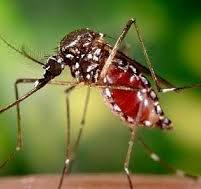by Francis Tuschek, Associate Editor
Data reported by the Integrated Provincial Health Office (IPHO) indicated that there were 218 cases of chikungunya documented between January and July 2024. In contrast, only 28 cases were reported in the province in 2023.
Of the affected areas, Tabina had the highest number of cases at 47, followed by Lapuyan and Dinas, each with over 30 cases.
Chikungunya, as described by the World Health Organization (WHO), is a viral disease transmitted by mosquitoes that leads to fever and intense joint pain.
While dengue poses a greater threat than chikungunya, authorities have emphasized the importance of not becoming complacent.
In comparison to dengue, which presents with a consistent high-grade fever for 2-3 days followed by abdominal pain, chikungunya typically involves 1-2 days of fever before the onset of a notably larger rash that is erythematous. Chikungunya is also characterized by joint pain, as stated by Dahlia Aseniero, the Health Education and Promotion Officer of IPHO Zamboanga del Sur.
Authorities have advised that both children and adults are susceptible to chikungunya.
IPHO has recommended applying the same 5S approach used to combat dengue to address chikungunya. This strategy includes search and destroy, self-protection, seeking early consultation, supporting fogging, and maintaining hydration. Additionally, each barangay has been instructed to conduct daily cleanup drives.
Aseniero further emphasized the importance of seeking medical attention at the nearest health center if a family member experiences symptoms such as fever and joint pains.















